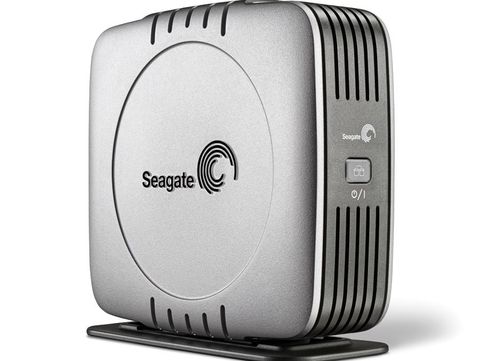TechRadar Verdict
Loads of storage, but disappointing speed
Pros
- +
Storage
Cons
- -
Performance lagging
Why you can trust TechRadar
Seagate's packaging for its ground-breaking 750GB hard drive stresses just how much you can squeeze onto it perpendicular platters. 15,000 songs, 25 DVD movies and 50 games is a lot of data.
However, capacity is always growing. Five years ago, Seagate would've counted capacity using Word documents, and in another five years it'll be high-definition audio and video. So before the iron goes cold, Seagate has dropped its technology into one of its stackable cases and provided both FireWire and USB connectivity.
At 1.2kg it's not exactly featherlight, but at least when stood vertically it takes little desk space. It can't be powered from your FireWire or USB bus either, because it needs connecting to the included PSU.
There are no drivers required, because this is a standard USB2/1.1 or FireWire compliant device. Plug in the cable, hold down the single button on the front of the drive to power on, and Windows will mount the drive automatically.
You get around 700GB of preformatted space, while a dim blue LED flickers under the button to show drive access. After installing the bundled BounceBack Express back-up software, you can use this button to back up your PC to the drive with a single press.
Performance issues
The drive boasts a modest 7,500rpm spindle speed and a generous 16MB cache, but we found performance lacking for a modern drive. We got an average transfer rate of 41,506kB/s while reading large files over Firewire, with a write speed of 2,2938kB/s.
USB2 transfers were around the same, but the regular old internal IDE hard drive in the same PC was slightly faster. It took two minutes 37 seconds to copy a 3.3GB fi le over FireWire, and two minutes 18 seconds using USB2.
For everything but the most demanding video editing, this is going to be more than fast enough for most tasks. Furthermore, if you need vast amounts of storage, this is a good choice. However, things change quickly.
Tech.co.uk was the former name of TechRadar.com. Its staff were at the forefront of the digital publishing revolution, and spearheaded the move to bring consumer technology journalism to its natural home – online. Many of the current TechRadar staff started life a Tech.co.uk staff writer, covering everything from the emerging smartphone market to the evolving market of personal computers. Think of it as the building blocks of the TechRadar you love today.

